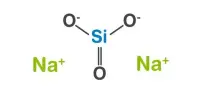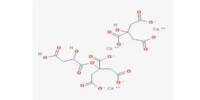Oxygen is the chemical element with the symbol O. It is the third-most-common element in the universe, after hydrogen and helium. It is a highly reactive element and is capable of combining with most other elements. When alone, two oxygen atoms usually bind to make dioxygen (O2), a colorless gas. It is a colorless, odorless gaseous element that constitutes 21 percent of the atmosphere and is found in water, in most rocks and minerals, and in numerous organic compounds. It is a pale blue as a liquid and solid. Pure oxygen is nonflammable.
Oxygen is part of the chalcogen group on the periodic table, and its atomic number is 8. It is a very reactive nonmetal. It also makes oxides with many elements. Oxides make up nearly half of the Earth’s crust. Oxygen in the form of O2 is produced from water by cyanobacteria, algae, and plants during photosynthesis and is used in cellular respiration for all living organisms.
Physical Properties
- Color: Colorless
- Phase: Gas; Oxygen changes from a gas to a liquid at a temperature of -182.96°C (-297.33°F) and Liquid oxygen can then be solidified or frozen at a temperature of -218.4°C
- Odor: Oxygen is an odorless gas
- Taste: A tasteless gas
- Conductivity: A poor conductor of heat and electricity
- Solubility: Slightly soluble in water, alcohol and some other common liquids
- Density: It is denser than air. The density of oxygen is 1.429 grams per liter
- Viscosity: Resistance to flow – stickiness. The viscosity is 189 millipoises (at 0°C).
Most life on Earth takes in oxygen gas (O2) to use in respiration. Many organic molecules in living things have oxygen in them, such as proteins, nucleic acids, carbohydrates, and fats. Oxygen is a part of water, which all known life needs to live. Plants make the Earth’s dioxygen by photosynthesis, using the Sun’s light to separate oxygen from water and carbon dioxide. Ozone (O3) is at the top of the Earth’s atmosphere in the ozone layer. It absorbs ultraviolet radiation, which reduces the radiation that reaches ground level.
Oxygen was isolated by Michael Sendivogius before 1604. It is often thought that the element was discovered by Carl Wilhelm Scheele, in Sweden, in 1773, or by Joseph Priestley, in England, in 1774.
In Summery
- Atomic Number (number of protons in the nucleus): 8
- Atomic Symbol (on the Periodic Table of Elements): O
- Atomic Weight (average mass of the atom): 15.9994
- Density: 0.001429 grams per cubic centimeter
- Phase at Room Temperature: Gas
- Melting Point: minus 361.82 degrees Fahrenheit (minus 218.79 degrees Celsius)
- Boiling Point: minus 297.31 degrees F (minus 182.95 degrees C)
Occurrences:
Oxygen is the most common element by mass on Earth. It is the third most common element in the universe, after hydrogen and helium. About 0.9% of the Sun’s mass is oxygen. Oxygen makes up 49.2% of the Earth’s crust by mass as part of oxide compounds like silicon dioxide. It is also the main part of the Earth’s oceans, making up 88.8% by mass.
The high amount of oxygen gas on Earth is because of the oxygen cycle. This is mainly controlled by photosynthesis, which makes oxygen gas from carbon dioxide, water, and the Sun’s energy. Respiration then takes the oxygen gas out of the atmosphere and turns it back into carbon dioxide and water. This happens at the same rate, so the amount of oxygen gas and carbon dioxide doesn’t change because of it.
Uses
- The greatest commercial use of oxygen gas is in the steel industry.
- Large quantities are also used in the manufacture of a wide range of chemicals including nitric acid and hydrogen peroxide.
- Oxygen gas is used for oxy-acetylene welding and cutting of metals.
- Oxygen is used for making steel, plastics, textiles, rocket propellant, and welding.
- It is used in the production of synthesis gas from coal, for resuscitation and as an inhalant.
















